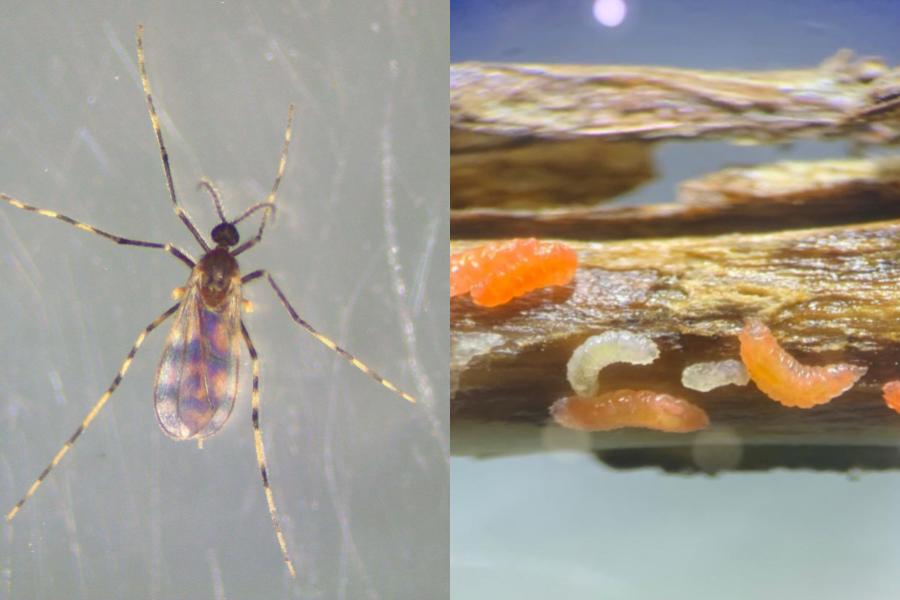St. Paul, Minnesota, USA
March 14, 2023
 Image of soybean gall midge. Credit: Gloria Melotto
Image of soybean gall midge. Credit: Gloria Melotto
University of Minnesota students conducted crucial genome sequencing for the newly discovered soybean gall midge — a pest that is threatening the soybean crop, one of the most widely cultivated and consumed throughout the world. This small fly has been found in major soybean-producing states in the Midwest, including Minnesota, Iowa, Nebraska, South Dakota and Missouri.
Pest management has been difficult because scientists have a limited understanding of its biology. Genome sequencing can give stakeholders a deeper understanding of the insect’s biology, as well as provide a suite of tools for detection and identification.
The U of M graduate students, who published their findings in the journal G3: Genes, Genomes, Genetics, were able to obtain the sequence of the insects’ genome using a small fraction of the resources typically afforded to professional sequencing efforts, providing critical information for the development of future pest management strategies.
The first whole genome of the soybean gall midge was sequenced and published by students taking the course Comparative Animal Genomics taught by Christopher Faulk, an associate professor in the Department of Animal Science. Under Faulk's guidance, students had the unique opportunity to perform analyses and contribute to the writing of the publication. Graduate student Gloria Melotto is the first author of the journal article and led this project from the lab of Amelia Lindsey, an assistant professor in the Department of Entomology, and is co-advised by Robert Koch, an associate professor in the Department of Entomology.
They found:
- The genome of the soybean gall midge is approximately 200 million nucleotide bases: less than one-tenth the size of the human genome.
- Their assembly of the sequence has one of the highest completeness levels for a gall midge fly genome and might serve as a guide for studies of related insects.
- This insect is spreading rapidly in the Midwest and this public genome will advance research towards containing it.
"Sequencing an animal genome has historically been extremely expensive and time-consuming," said Melotto. "Since there are typically hundreds of scientists working with millions of dollars, our small team was particularly excited to publish these findings."
The group of 10 students extracted DNA from soybean gall midges collected from a farm in Rock County, Minnesota. They sequenced the insect’s genome in one semester using a commercially available portable long-read sequencer. For approximately $2,000, the students managed to create this genome for a fraction of the cost of typical sequencing, which can be in the millions of dollars.
“This insect was described to science only a few years ago, in 2019. The fact that we can go from the discovery of a new pest, to a class of students publishing a genome sequence in such a short amount of time is a testament to how far the field of genomics has come,” said Lindsey.
The soybean gall midge genome will provide a resource for ongoing and future research focused on the biology, genetics, evolution and management of this pest and other gall midges.
“Having the genome will rapidly advance research into this agriculturally significant pest. Sequencing an animal genome is an impressive feat usually accomplished by consortiums of specialists. Now I am proud to count our students among them,” said Faulk.
This work was supported by the NIH Office of the Director T32OD010993 (Flack), NIH R21AG071908 (Faulk), Impetus Grant (Norn Foundation) (Faulk), the USDA National Institute of Food and Agriculture (Faulk), and the Minnesota Rapid Agricultural Response Fund (Koch and Lindsey).